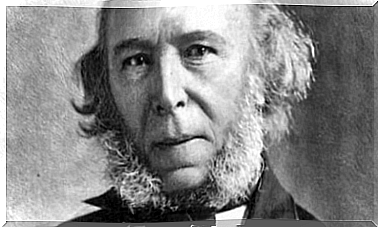7 Steps To Emotional Balance

All your emotions are necessary. Every emotion provides valuable information about you, which is why it is so important to pay attention to how you feel. Talking to yourself on an emotional level is crucial. Being aware of your emotional state is crucial to achieving emotional balance and well-being.
That said, it’s not always easy to watch yourself and figure out what’s happening. This is especially true in emotionally difficult and painful situations. The kind of situations that cause distress and fear are like a monster waiting to catch you.
These situations cause doubt, stress, fear, expectations and uncertainty. Not knowing what to do or how to act can paralyze you. These kinds of situations often trap you in a spiral of misery and apathy. What can you do if these situations become untenable? How should you act when you feel lost, at a dead end? How can you face these negative emotions that keep you trapped?
The psychiatrist and professor of psychobiology Vicente Simon, has extensively researched and studied Buddhist psychology. He has devised a procedure that can help us in these situations: the 7 steps to emotional balance. This is a set of exercises designed to relieve suffering, prevent psychological damage from emotional shock, and prevent inappropriate actions that could harm others. These are the seven steps to emotional balance:

1. To achieve emotional balance, press pause
When you hear bad news, get into an argument, or are disappointed, the first step is to stop. When you feel that an intense and unpleasant emotion is arising, you should stop. Take a moment and focus all of your attention on the emotional movement taking place within.
It won’t be easy in the beginning. That is normal. Stopping a process that has been on autopilot for years is not easy. That’s because it contradicts everything you’ve done before. In fact, emotions usually make you act in an abrupt and thoughtless way. So instead of ending up with an emotional explosion, stop, give yourself time to think and appreciate what’s happening inside you.
Doing this allows you to operate on autopilot. Then it is possible to react in a different way than usual. That said, it’s important to practice because you may not understand it right away. To help yourself, try exercising in a place where you feel calm and relaxed.
2. Breathe deeply, relax
Once you’ve paused, the next step is to breathe. You can achieve emotional balance by paying attention to your breathing. Pay attention to those parts of the body where the emotion manifests.
At times when you feel hyperactive or stressed, it is important to breathe deeply. Deep breathing helps you to calm down and reconnect with yourself. The goal is to take ten breaths per minute. Of course you can’t do this right away. If you are already angry, you can take up to 30 breaths per minute. The main thing is to practice and focus on it.
On the other hand, when you experience difficult emotions, you may notice that your heart is beating faster. You may also feel a slight pressure in your chest or tension in your abdomen. Anyway, the most important thing is not to try to avoid these physical sensations. Often your emotions speak through your body. It’s about knowing what they are and calming them down by breathing. When you breathe and relax, you can reduce the physical sensations that your emotions bring.
3. Be aware of your emotion
This step consists of familiarizing yourself with the emotion on an experiential, not just intellectual, level. In other words, feel the emotion and everything that comes with it as a direct experience. For example, how the emotion is physically expressed.
Then you can imagine or observe in which situation or situations that emotion can be activated. Is it a specific person or maybe a thought? Or a memory you have? The key is to find out the origin of the emotion and observe all its aspects.
Next, we need to identify which emotion you are dealing with in order to achieve emotional balance. In other words, give it a name. Is it anger, sadness, jealousy or maybe fear? Some researchers believe that when you name your emotions, they lose their power. Finally, to further identify the emotion, you can ask yourself several exploratory questions. Ask yourself how that emotion expresses itself, what necessity it hides, and what it motivates you to do.

4. Accept the experience, allow the emotion
This step consists of accepting the emotion without judgment. Not only that, but allowing the emotion without suppressing or resisting it.
This won’t be fun at first. After all, some of these emotions are unpleasant. However, it is important to get to know it and be able to deal with it later. So be a spectator of the rejection that this experience evokes in you. Observe the attempts to escape the situation in a neutral way and defend yourself. The important thing is that you don’t do anything. Let the emotion express itself exactly as it is. That way you give the emotion space and recognize it as part of yourself to find an emotional balance.
5. Be kind to yourself
In the midst of this profound process, don’t forget to take care of yourself. These seven steps deal with the things that hurt you, weigh you down and overwhelm you. During all of this, you also need to connect with the part of yourself that is whole and healthy. Connect with that part that works through affection and love. If you don’t take care of yourself, you damage the power you need to achieve emotional health and well-being.
Now it can be hard to hug yourself and treat yourself with love. If you find it difficult, go to the people who are always with you. Find the people who are always willing to help you. They will make it easier to relieve your stress and anxiety.
6. Let go of the emotions
By now, the intensity of the emotion should decrease little by little. That will allow you to separate yourself from it. By doing so, you can differentiate between you and the emotion. You are not your emotion, you just house it for a while.
It is important to realize that you can only let go of your emotions if you leave it out of your internal dialogue. You cannot force the emotion to disappear. You have to let it resolve on its own. In that sense, an important strategy for limiting the power of the emotion is to recognize that you are not the emotion. The emotion is not you.

7. Respond, or not, depending on the circumstances
Once the emotional flow is over, the final step toward emotional balance is deciding whether or not to take action. If the situation you are in requires an answer, you are now in a better position to make it happen. From a place of calm and connection with doubts and desires, it will be much easier to respond. If an immediate response is not necessary, it is best to wait for the emotion to lose its intensity. Act only after you understand the message.
As you can see , a difficult emotion can transform. With attention and time, he can change into peace and calm. The Dutch philosopher Spinoza put it perfectly: “An emotion that is a passion is no longer a passion once we form a clear and distinct idea of it.”
The presence of your emotions is the key that opens the door to emotional balance. It is an exercise that requires time and skill. However, if you manage to master it, it will help you deal with your daily difficulties and problems. It not only improves the relationship with yourself, but also with others.
References
Simon, Vicente. (2014), Aprender a practitioner of mindfulness. Sello editorial, Barcelona.









